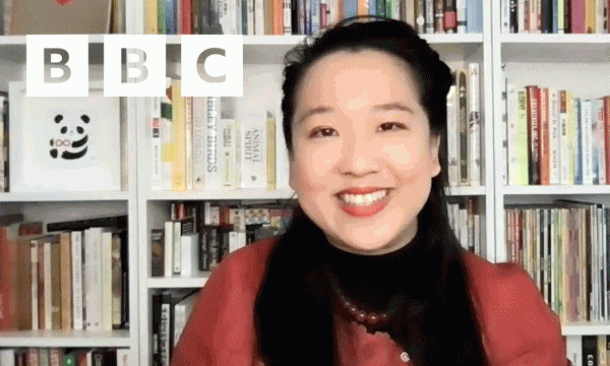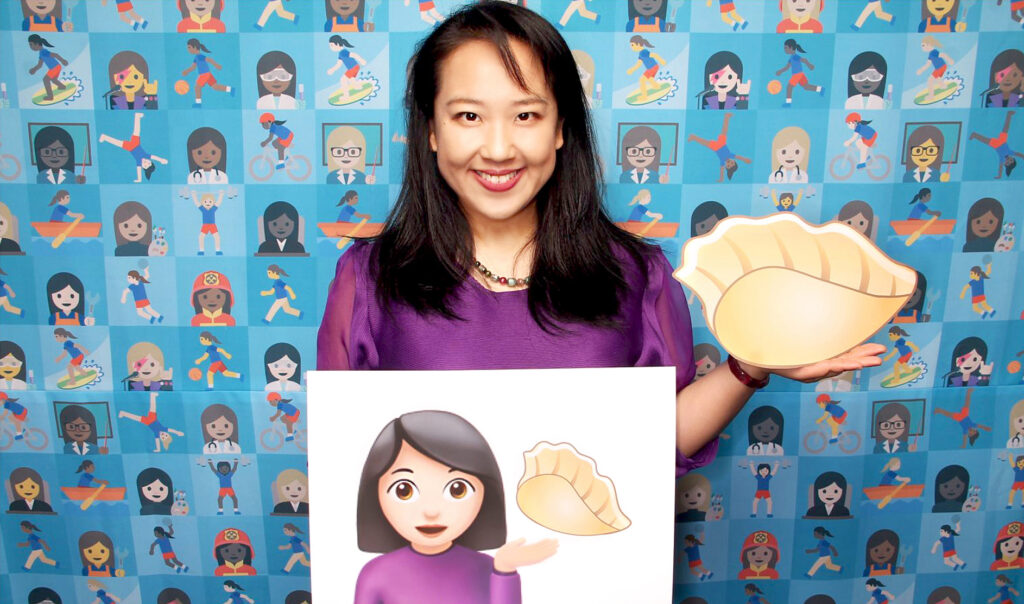On August 8, 2015, my friend Yiying Lu was using the Messages app on her iPhone to chat with another friend of hers, Jennifer 8. Lee, about their plans to get together in San Francisco for a meal of Chinese dumplings. Lu wanted to express her excitement by sending Lee a message incorporating the dumpling emoji–until she realized that there wasn’t a dumpling emoji.
Nothing remarkable about that. People have been discovering that emoji they want to use don’t exist ever since the first set of 180 such icons debuted in Japan nearly two decades ago. But Lu is a graphic artist whose primary passion is creating work that melds the worlds of art and tech, a goal that brought her from Shanghai to San Francisco by way of Sydney. She’s done work for clients such as Disney, Pepsi, and Expedia and is the creator of the drawing that became Twitter’s Failwhale. And so her instinct, when she discovered the tragic absence of a dumpling emoji, was that it was a problem to be solved.
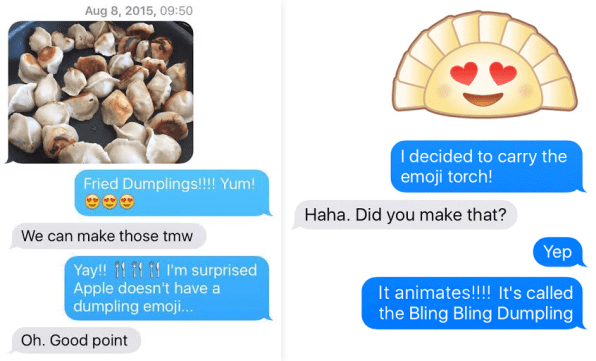
“I’m a designer,” she remembers thinking to herself. “I can do this.”Lu quickly cranked out an emoji-style image of a dumpling–an anthropomorphic one, with blinking hearts for eyes, rosy cheeks, and a broad smile. She messaged it to Lee–a writer, producer, entrepreneur, and former New York Times journalist–who, Lu says, was instantly smitten and asked, “Did you make this? Can I tweet about it? We should do something with it. We should let other people use it, too.”
That impulsive reaction turned into a unlikely goal: to make a dumpling emoji available to everybody. It was an ambitious undertaking given that all Lu and Lee knew about emoji , at first, was that they were there. “‘Where do emoji come from?’” Lee recalls asking herself. “I had no idea.”
Lu and Lee went on to accomplish their mission, but it took plenty of time and effort. In March 2017, the Unicode Consortium, the industry group responsible for the consistent encoding and display of textual characters of all sorts–including emoji–formally announced Emoji Version 5.0. Among its 56 new icons is a dumpling. Google, Facebook, and Twitter have created their own versions, all of which are now available; Apple will presumably add one to iOS as part of its next emoji update, which it’s teasing for later this year.
Along the way, Lu and Lee also began thinking of the quest as involving a greater cause. Millions around the world use emoji to communicate, but only representatives of 17 full, institutional, and associate member organizations of the Unicode Consortium get to vote on new ones. Wouldn’t this picture language be richer and more relevant to more people if a wider swath of humanity had a say in choosing new ones? That democratization has begun to happen–thanks in part to the efforts of these two dumpling-loving friends.
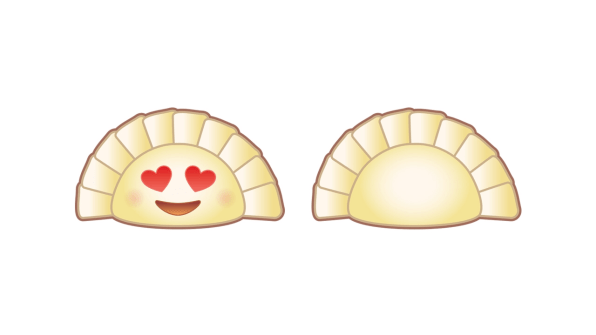
A UNIVERSAL MENU ITEM
The meal that launched Lu and Lee’s dumpling-emoji dream happened to involve Chinese potstickers. But as they began to take the project seriously, they realized that one argument in its favor was that dumplings are beloved on a global scale in a way that few foods are.
“We did some discovery and research,” says Lu. “The dumpling is actually universal. Georgia has khinkali. Japan has gyoza. Korea has mandoo. Italy has ravioli. Polish people have pierogi. Russian people have pelmeni. Argentians have empanadas. Jewish people have kreplachs. Chinese people have potstickers and various other dumplings. Tibet and Nepal have momos. Turkish people have manti.” Given how integral dumplings are to so many cultures, “the fact there was no dumpling emoji told me whatever system was in place had failed,” adds Lee.
That system involves new emoji being discussed and approved by members of the Unicode Consortium at the organization’s multi-day meetings, which span an array of issues related to the group’s work, not just emoji. The full members are mostly gigantic U.S.-based tech companies–Adobe, Apple, Facebook, Google, Microsoft, Netflix, and others–who pay $18,000 a year for their seats at the table. Many of their representatives have participated in the Unicode process for years.
There are, however, other tiers of Unicode participation, all the way down to individual non-voting memberships that cost only $75 a year. Lee signed herself up at that level, which got her onto the Unicode mailing list. And when she received notification of a November 2015 meeting to be held at an Apple office in Silicon Valley, she realized that she’d be in the Bay Area and could attend in person.
So she did, not knowing exactly what to expect. It turned out that she was greeted by “just a corporate conference room and maybe 15 to 20 people, mostly white people in their 50s and 60s,” she says. “They’re really excited to see me: ‘Tell me about yourself.’ It felt like going to a new church for the first time.”
Most of the four-day meeting was devoted to subjects other than emoji. (Example: discussion of the logistics of adding a bitcoin symbol to the Unicode character set.) Still, Lee came away with an understanding of the complexities of the emoji process, where even a seemingly simple matter like the possibility of a bean emoji soon turns into a debate about whether it should be lima, green, or pinto—or maybe all three. She also managed to get herself appointed to Unicode’s emoji subcommittee, evidence that the consortium was open to fresh input.
She and Lu then got to work, giving their overarching effort to democratize emoji a name—Emojination—and launching a successful Kickstarter campaign to raise enough money to make Emojination an associate member of the Unicode Consortium. In January 2016, at a meeting of the organization held at an IBM office, they formally presented their dumpling emoji concept.
What they presented had already gone through multiple revisions. Lu’s original cartoony drawing–which she nicknamed “the bling-bling dumpling”–was as much a character as an edible and that she drew inspiration, she says, from the smiling poop emoji. The consortium pointed out to her that food emoji, as a rule, are not anthropomorphic. So she removed the dumpling’s face. Then it noted that food items are often shown at a 45-degree angle, sending her back to the drawing board again.
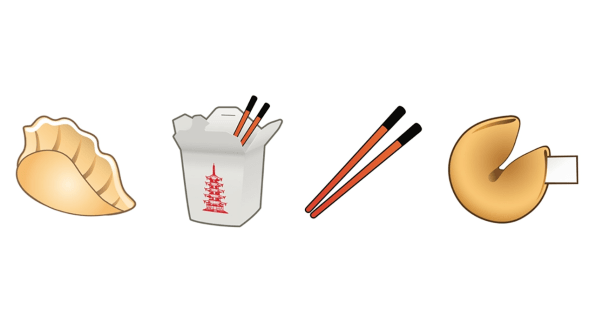
Lu had also drawn three other items associated with Chinese food that the consortium had green-lighted, and which are also part of Emoji 5.0: a takeout box, chopsticks, and (as suggested by Lee) a fortune cookie. She’s careful, however, to note that this set of emoji is more multicultural than Chinese: She never saw a classic Chinese-food takeout box until she arrived in the U.S., and the fortune cookie was apparently invented in California and inspired by a Japanese confection.One bit of the democratization of emoji that Lu and Lee had hoped for happened in real time. When a board member tweeted a photo of Lu presenting her drawings at the meeting, a Twitter user in Taiwan commented that her depiction of crossed chopsticks would be considered rude by some older people. “Even though I was born in Shanghai and grew up in Asian culture, there are still rituals and traditions I was not aware of,” says Lu. As part of her final design polish, she un-crossed the sticks.
#UTC146 Peter Edberg accepts #dumpling #chopsticks#fortunecookie #takeoutbox originals from emoji designer YiyingLu pic.twitter.com/FB6QgK39H0
— Alolita Sharma???? (@alolita) January 25, 2016
The dumpling emoji jumped over its biggest hurdle at that January 2016 meeting, but the painstaking Unicode process is such that it took another 14 months before Emoji 5.0 was announced and its inclusion of a dumpling was officially official. It’s not just that there were 55 other emoji that needed to be considered for the 5.0 release: Emoji 5.0 is part of Unicode 10.0, a master set of characters and symbols that includes a grand total of 8,518 new items. It was released in June of this year.

THE ART OF NOT BEING TOO SPECIFIC
Rather than depicting a specific type of dumpling, Lu’s final drawing was a romantic ideal, aiming for something that could cross cultural borders rather than being pigeonholed as Chinese food. “I picked that design because it resembles other dumplings,” she explains. “The kreplach and gyoza and mandoo are all in that sort of style.”
But for all the thinking she put into the dumpling she drew–and despite the imprimatur of having it blessed by Unicode–it’s not the image you’ll see if you pull up a dumpling emoji on your phone, tablet, or computer. The consortium’s emoji renderings are for reference only; though it provides some guidelines about matters such as skin tones and the direction that items depicted in emoji should face, it also stresses that “the actual presentations on phones and other devices are up to vendors.” Companies such as Apple, Google, Facebook, and Twitter are free to go in their own directions.
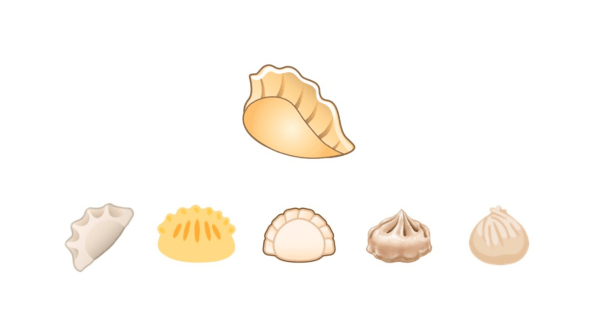
And they do. While Apple has not yet unveiled its rendering, none of the dumplings from other major companies are clones of Lu’s. She and Lee take particular issue with Facebook’s version–not so much because it departs from Lu’s drawing but because it’s a soup dumpling, a specific dumpling from a specific part of China, thereby losing the international aspect they’d strived for. Unicode’s dumpling officially doubles as an empanada and a pierogi, neither of which looks like Facebook’s soup dumpling.
“Out of the variety of dumplings out there, we chose the one we chose very carefully to be used in a cross-cultural context,” says Lee. “The one [Facebook] chose can’t be, and on top of that, they chose the wrong one.”
The nature of emoji is such that an artist like Lu may be destined to be disappointed by some of the designs that others create based (or not based) on her initial concept. But the overall experience has been worth it. “By accidentally walking into the room of the Unicode Consortium, it made me feel like artists could really take initiative to go and change the dynamic of the conversation,” she says. “And I was welcomed.”
The overarching aim of the Emojination project–to help other people propose new emoji in a way that will get the attention of the Unicode Consortium–has also gained traction. Emoji 6.0, currently a work in progress, includes 54 new emoji, and “a lot of the proposals are from people who came to the system through Emojination,” says Lee, who has used the knowledge she gained from the dumpling project to help others.
These emoji-in-waiting include everything from a woman’s shoe without a high heel, which was advocated for by a mom with three daughters, to a lobster, independently proposed by both a Maine resident and the Red Lobster restaurant chain. (Lee says that when companies campaign for emoji, they often see the effort as a form of advertising and don’t understand how to come up with something Unicode might actually approve.) Lu is back with a peacock emoji, which she and another friend were inspired to propose after a visit to a Burmese restaurant led them to contemplate the colorful bird’s cultural importance in Burma.
Lee also assisted with a proposal that was a significant news story in itself: the creation of an emoji depicting a woman wearing a hijab, which was initiated by a 15-year-old girl living in Berlin. But for all the success Emojination has had opening up the Unicode process, Lee says that it’s just a first step. Over time, she hopes, “the system for emoji will evolve so you don’t have this technical standards body regulating the little glyphs that appear on your phone keyboard.”

THE ENDLESSLY FASCINATING DUMPLING
Meanwhile, Yiying Lu isn’t done being inspired by dumplings. This summer, she spent two weeks at design consultancy Ideo’s branch in Shanghai as a creative in residence, as part of a program that invites in artists to work on their own personal projects in collaboration with Ideo employees. In further dumpling research, she had learned that “hun dun,” the Chinese word for the type of dumpling that Westerners call a wonton, has also long referred to the idea of the primordial chaos of the creation of the universe. She connected the dots between that fact and the way that dumplings, which conceal a filling that could be savory or sweet, meat or vegetable, have their own element of mystery. “Every time we take a bite, metaphorically we open up a new universe,” she says.
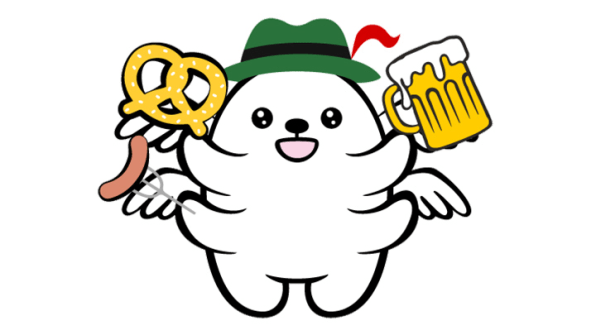
The Chinese mythological atlas The Classic of Mountains and Seas, dating to the Ming dynasty, included a drawing of a hun dun as a four-winged, six-legged beast. At Ideo, Lu adapted that image into her own roly-poly dumpling critter, then riffed on the theme along with the company’s staffers to create variants, including multicultural versions such as an Oktoberfest hun dun and a Día de Muertos hun dun.Now Lu is planning to release stickers of her hun dun creature for use on major messaging apps: Facebook Messenger, Line, and WeChat. Unlike emoji, stickers don’t get approved by the Unicode Consortium or redrawn by platform providers, which means that her hun dun images are a means of unfiltered personal expression in a way that her dumpling was not. That gives Lu and Lee’s dumpling journey not one happy ending but two–and as other emoji creators follow in their footsteps, there’s more to come.




